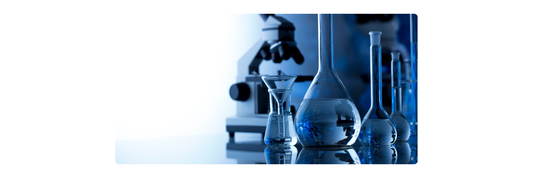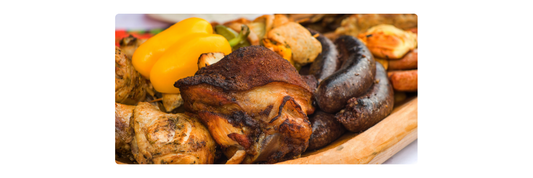According to neuroscientific research conducted at Yale, the art of tasting wine can stimulate the brain more than complex math or listening to classical music.
If you have ever attempted to define a particular smell or flavor in wine, you may recognize the challenge. It might take a few moments to find the right words to describe your experience. Sometimes it is hard to decipher, with the aroma or taste identity stuck on the tip of your tongue (both literally and figuratively). You may be unable to recall or put into words what you are sensing, even though it is something familiar. This is when the brain is hard at work.

People who taste wine for a living have developed a complex brain library of distinct smells and flavors, making recall much quicker and more evident for them. This is why tasting notes from winemakers and wine reviewers can be so complex.
For all of us novice tasters, spending quality time tasting and enjoying wine triggers multiple areas of the brain, from motor function and sensory to the feeling of joy and other emotions.
The next time you enjoy a glass of wine, be slow and methodical. Take a moment to slow down and flex those brain muscles. There are no wrong answers or wrong opinions when it comes to wine – the experience is your own to enjoy. And always drink responsibly. It is okay to spit (this is a great technique to try at home as some practice may be required)!
Download our Wine Tasting Mat and Engage Your Brain in a Tasting Experience!
The 5 S's of wine tasting is a simple five-step approach to evaluating and appreciating wine while engaging all the senses and giving the brain a nice workout.
Not a Wine Lover? Try Coffee Tasting! > link
Step 1: See

Begin by visually inspecting the wine to gather initial impressions about its appearance, clarity, and color.
Observation: Hold the glass against a white background and tilt it slightly to assess the wine's hue, intensity, and clarity. Observe variations in color and transparency from the rim to the center of the wine.
Analysis: The wine's color can provide insights into its age, grape variety, and winemaking techniques. Red wines may range from pale ruby to deep purple, while white wines can vary from pale straw to golden yellow. Rosés can vary from noticeably light pink to deep transparent corals and reds.
How would you describe the color?
Step Two: Swirl

Gently swirling the wine in the glass releases aromatic compounds and oxygenates the wine, enhancing its aromas and flavors.
Technique: Hold the stem of the wine glass and gently swirl the wine in a circular motion. This action coats the inside of the glass, allowing volatile compounds to evaporate and intensify the wine's aroma, or bouquet.
Effect: Swirling aerates the wine, helping to unlock its aromas and release complex scents. You can also assess the viscosity of the wine on the side of the glass.
Swirling can be intimidating, but once you get the hang of it, it will help your brain identify aromas and is also the perfect moment to add Wine Tamer to your glass.
Step Three: Sniff

Use your sense of smell to explore the wine's aromatic profile, identifying various scents and nuances.
Approach: Bring the glass to your nose and take a series of short, gentle sniffs, inhaling deeply to capture the full range of aromas. You can try inhaling with your mouth closed and slightly open.
Analysis: Pay attention to the intensity, complexity, and diversity of aromas present in the wine. Note any primary fruit aromas, such as berries or citrus, and secondary and tertiary ones, such as oak, spice, or earthiness. The aromas can provide valuable clues about the wine's grape variety, origin, and age.
Can you identify any individual aroma profiles? These might be fruits, spices, minerals, or earthy elements.
Step Four: Sip

Taste the wine to evaluate its flavor profile, balance, and texture on the palate.
Sip Technique: Take a small sip of wine and allow it to coat your entire mouth, swirling it around to fully engage your taste buds.
Analysis: Assess the wine's overall balance, intensity, and complexity of flavors. Note the interplay between sweetness and acidity, the presence of tannins (for red wines; these are the mouth drying bitterness and astringency), and the length and persistence of the finish (how long is the flavor retained). Pay attention to the wine's texture and mouthfeel, from light and crisp to full-bodied and velvety.
Can you identify any individual flavors? These might be fruits, spices, minerals, or earthy elements.
Step 5: Savor

Take time to appreciate the wine's lingering impressions and reflect on your tasting experience.
Approach: Hold the wine in your mouth for a few moments, allowing the flavors to develop and evolve. Swallow or spit the wine, then take a moment to savor the aftertaste and reflect on your overall impressions.
Analysis: Consider the wine's complexity, balance, and enjoyment. Reflect on its potential food pairings, aging potential, and overall quality.
Do you enjoy this wine? Is there anything particularly memorable about it?
Enjoy the sensory journey and the opportunity to discover new wines. By following the 5 S's of wine tasting, you may appreciate a wine's characteristics while engaging the mind in a comprehensive and complex process. Cheers!
“The successive stages of the biomechanics of movement of the ingested wine and transport of the released volatiles will be correlated with activation of the multiple brain mechanisms, apparently engaging more of the brain than any other human behavior.”
- Gordon M. Sheperd, Professor Emeritus
Yale School of Medicine, Department of Neuroscience
References:
Shepherd, G.M. Neuroenology: how the brain creates the taste of wine. Flavour 4, 19 (2015). https://doi.org/10.1186/s13411-014-0030-9
Shepherd GM. A new vision for the science of human flavor perception. Front. Integr. Neurosci. Conference Abstract: Science of Human Flavor Perception.2015; doi: 10.3389/conf.fnint.2015.03.00010.
Mautz S. Drinking Wine Helps Your Brain in an Unexpected Way, According to Yale Neuroscience. Inc. Magazine. 2019.
DiGiulio, S. Wine tasting can work the brain more than math, according to neuroscience. Better by Today, NBC. 2018.
Steiman H. Deconstructing How We Taste, Columbia neuroscientist explains messages our brains interpret. Wine Spectator Magazine. 2017.
Tilden M. Learn the Five S's of Wine Tasting. Wine Enthusiast.




